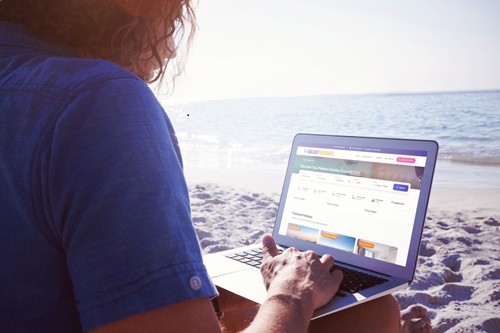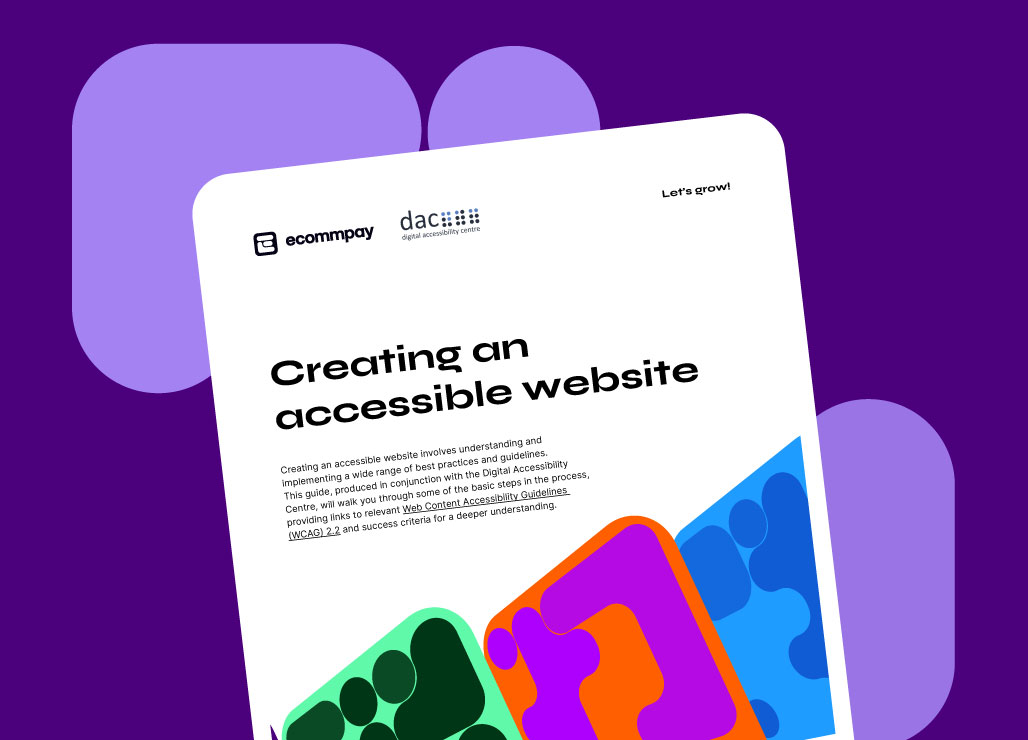Championing digital accessibility: Ecommpay, HSBC and Project Nemo

In today’s world, where technology shapes nearly every aspect of our lives, the need for accessible digital services has never been more urgent. But despite progress in diversity, equity, and inclusion (DEI), disability often remains a sidelined issue in many industries – especially in financial services. The recent fireside chat hosted by HSBC Innovation Banking, in partnership with Project Nemo, was a groundbreaking conversation that brought the voices of those most affected by digital inaccessibility to the forefront.
This conversation wasn’t just a routine event – it was a deeply engaging, human-centred dialogue on digital accessibility and the need for a cultural shift in how businesses approach inclusion. The session featured powerful stories, actionable insights, and bold commitments, all underscored by a shared belief: accessibility isn’t just a “nice-to-have” – it’s essential.
DEI needs to prioritise disability inclusion
Too often, DEI initiatives focus primarily on gender and ethnicity, leaving disability inclusion on the backburner. This lack of attention to disability has led to a growing gap in accessible products and services, particularly in sectors like financial services. Without involving people with lived experience, companies risk creating environments where accessibility is an afterthought, and millions of people with disabilities remain excluded from full participation.
Malintha Fernando, HSBC’s Global Head of Digital Experience and Accessibility, and Joanne Dewar, Co-Founder of Project Nemo, highlighted the importance of putting accessibility at the heart of business practices. They explained how Project Nemo was created in response to industry feedback about the widespread impact of disability inclusion. HSBC, for example, has made it clear that digital accessibility is a non-negotiable requirement for any partnership. Their mantra: “To be a partner or customer, digital accessibility is mandatory.”
The power of technology – and the barriers it creates
While technology has the potential to be a powerful enabler for people with disabilities, it often fails to meet their needs. During the fireside chat, Adi Latif, an Accessibility and Inclusive Design Consultant, and Zac Shaw, Co-Captain of ParalympicsGB, demonstrated how the digital and physical worlds often collide in frustrating ways for those with visual impairments.
The example of self-checkout services, designed for convenience, revealed a stark reality – such innovations aren’t equipped for those with accessibility needs. A live demonstration of using a screen reader to navigate the digital world made it clear: for technology to be truly accessible, it must be designed with inclusivity in mind, right from the start.
A personal journey: From sepsis to digital accessibility advocacy
One of the most powerful segments of the fireside chat came from Lord Craig Mackinlay, who shared his harrowing journey with sepsis. What began as a routine illness quickly spiralled into a life-changing event with Craig losing both his arms and legs. Craig’s experience highlighted the need for digital platforms and services to be designed with all users in mind, particularly those with physical limitations.
His message was clear: accessibility shouldn’t be a compliance exercise – it should be part of the culture of design. Craig stressed that businesses must stop treating accessibility as a siloed responsibility and instead embed it into every aspect of their operations.
Leading with accessibility at Ecommpay
Miranda McLean, Chief Marketing Officer at Ecommpay, shared her own company’s journey to prioritise accessibility at every level. Ecommpay’s commitment to accessibility began with a complete rebrand, ensuring that their products and services were designed with inclusivity in mind. Beyond their internal initiatives, Ecommpay has also worked to educate their merchant partners on the importance of accessible digital services.
Miranda highlighted that making accessibility a priority doesn’t have to come with a hefty price tag. Many initiatives, such as joining the Disability Confident Scheme or providing neurodiversity training, can be implemented at little to no cost. For businesses looking to make a start, the key is intentionality. As she said, “Starting somewhere is better than not starting at all.”
Inclusion isn’t just the right thing to do – it’s smart business
Disability inclusion isn’t just a moral imperative – it’s a business necessity. The “purple pound,” the spending power of disabled individuals, is worth a staggering £274 billion in the UK alone. However, without inclusive digital services, businesses risk losing access to this vital market.
As the fireside chat made abundantly clear, inclusive design not only benefits individuals with disabilities but also improves the user experience for everyone. A focus on accessibility fosters a sense of loyalty, dignity, and independence, as demonstrated by a heartfelt story from HSBC about a blind customer who could finally manage her own banking without relying on her partner’s help.
The path forward: A shared responsibility
The conversation didn’t just stop at raising awareness – it outlined the clear actions needed to create a more inclusive digital world. Key takeaways included:
- Involving people with lived experience in the design process is non-negotiable.
- Accessibility is not a one-time fix – it’s an ongoing commitment.
- Businesses must embed accessibility into their culture and values.
- Making digital platforms accessible doesn’t have to be costly, but it does require intention.
The session concluded with an inspiring call to action from HSBC: In collaboration with Project Nemo, they are offering free digital accessibility training courses globally, equipping teams with the skills needed to create accessible digital platforms. This is part of their commitment to making accessibility a core aspect of their operations and helping others do the same.
Building a more inclusive future
Disability inclusion is not a niche issue – it’s an issue that will eventually touch everyone. As the conversation at the fireside chat demonstrated, the time for meaningful action is now.
By embracing accessible design, financial services and other industries can not only enhance their reputation but also unlock new opportunities. As Miranda McLean and Kris Foster both pointed out, real change requires leadership. And with the right leadership, accessibility can be embedded into the very fabric of an organisation, making it a fundamental aspect of the customer experience.
The journey towards a more inclusive digital world is just beginning. As Kris Foster wisely put it: “Just start.” Whether you’re a business leader, a policymaker, or a consumer, the time to act is now.
Let’s ensure that the digital world we create is one that works for everyone.

